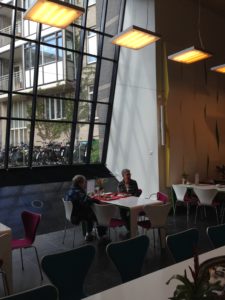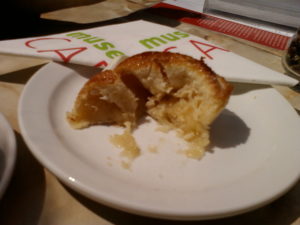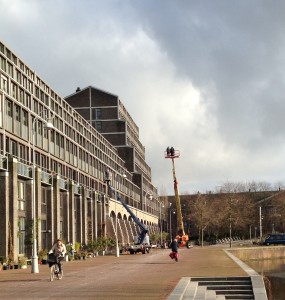For a respite from the rigors of wandering around the city, the calm of the Jewish Historical Museum café always repays your effort. You can not only get off your feet, but you can sample to the delights of both standard delicatessen food that you’ll recognize, and some specialties of Jewish Amsterdam which speak of its history.

Jewish Historical Museum Café
My personal favorite is gemberbolus, a sticky bun with lots of ginger syrup (although it does come in other flavors, too). You can find a recipe here as well as the story of how this delicious treat came to be in Amsterdam. It’s traced, thanks to Gaitri Pagrach-Chandra, back to Spain in two possible ways: first, it may have been a snack for the occupying Spanish forces when they invaded the Netherlands during the Eighty Years War (1568-1648). But there seems little question that the bolus came with the Sephardic Jews fleeing the Spanish Inquisition.
Although the Netherlands was not a paradise for Jewish people — for example, they couldn’t join guilds or become citizens — it offered far more equality and opportunity than any other country at that time. The community prospered and became essential to Amsterdam’s economy as well as its character. By 1675, they had erected the magnificent Portuguese Synagogue. Why, if many were originally Spaniards, did they call it that? Partly because some fled to Portugal first before the Inquisition began there, but also because of the bitter history of the Spanish invasion and not wanting to be associated with Catholic Spain.
Even if you can’t taste all that in the gemberbolus, it’s good to remember how often food brings history alive. Since I was too busy eating my roll to take a picture of it, I’m indebted to the delightful What’s Cooking blog for the delightful photo below:

Thanks to timskitchen.blogspot.com


